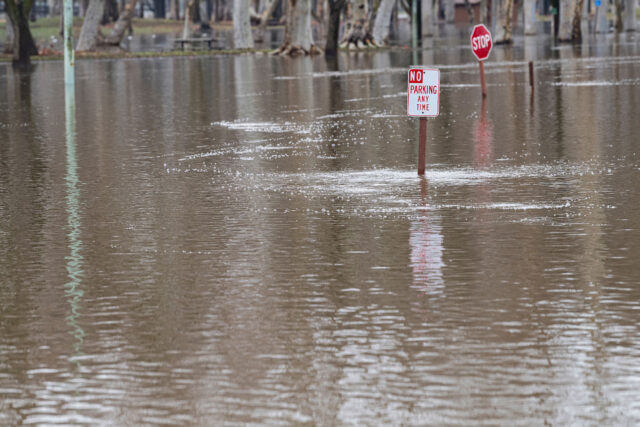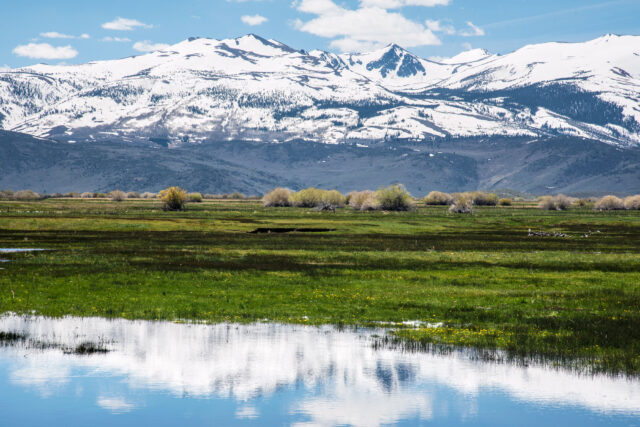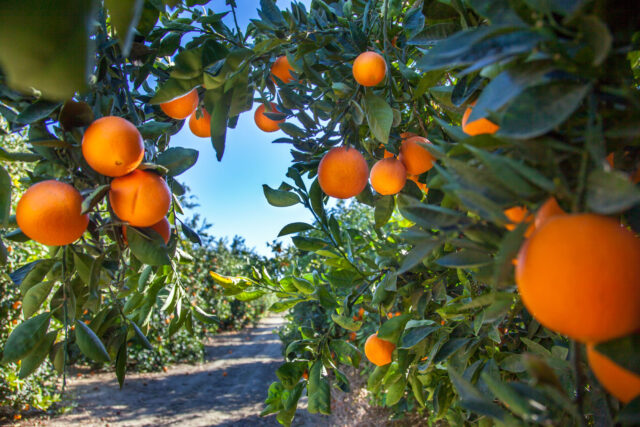With the arrival of a series of atmospheric rivers in recent weeks, drought-weary Californians are now confronting the weather whiplash that is a hallmark of our state’s climate. Flooding, power outages, and downed trees are now dominating the news. It’s a remarkable shift from the past few years, which saw the driest three-year period in the state’s recorded history. And while it’s tempting to think the drought is now over, it’s not—and if anything, the recent shift in conditions highlights just how much Californians need to prepare for wetter wets and drier dries.
The past year was very important for California water. Water managers found ways to innovate and adapt. As a result, cities fared relatively well during this dry, hot year, thanks to years of investments in water conservation, water system interconnections, storage, and new supplies. Furthermore, the state responded more nimbly to dry wells and water supply threats in small, at-risk communities, and made earlier moves to reduce allocations where needed to protect other water users and environmental flows. And while the drought was undeniably hard on agriculture, California’s farmers demonstrated the resilience they’re known for.
But there’s more work to be done. Water supplies are tight, and managers are preparing for a possible fourth year of drought. And perhaps most troubling, freshwater ecosystems have endured a deepening crisis that’s further harmed the state’s struggling fish and waterbirds.
At the PPIC Water Policy Center, we continue to conduct rigorous research to inform key debates about how to respond to the challenges of our changing climate. In 2022 our experts looked at:
Changing land uses in the San Joaquin Valley: It is now widely accepted that hundreds of thousands of acres of farmland in the San Joaquin Valley will need to come out of irrigated in production to reduce groundwater overdraft and meet the mandates of the Sustainable Groundwater Management Act (SGMA). The big question is: what are the best ways to support the valley’s communities, economy, and environment as these agricultural lands are retired?
We released a trio of reports that examined this question from multiple angles, illuminating dust and air quality concerns (and best practices for containing dust), looking at water-limited cropping as an alternative to fallowing, and exploring solar development as a new—and possibly attractive—use for fallowed lands. We also released a pair of blog posts that explored using fallowed lands in the San Joaquin Valley for rangeland or habitat restoration.
Challenges for freshwater ecosystems: Freshwater ecosystems have been on life support for years. We’ve continued our work looking for solutions, and this year’s report on storing water for the environment considers a potentially game-changing way of managing water to benefit freshwater ecosystems. We interviewed people doing fascinating work to preserve the state’s fisheries, and looked at how water trading can be used to help ecosystems. And we interviewed one of the state’s premier experts on river restoration.
Supporting California’s agriculture: California’s agriculture had a lot to contend with in 2022. Historic reductions in surface water deliveries have had major impacts in some farming regions, and drought also continued to stress the state’s groundwater reserves. We released a policy brief that documented what drought has cost the sector, and then explored our findings in a well-attended event. We gave testimony about SGMA implementation in farming regions.
Accounting for where the water goes. California’s water managers are now adjusting, in real time, to changes in hydrologic conditions that once would have been unthinkable, as we explain in this year’s Priorities for California’s Water report. Data will be key to these efforts, especially in critical watersheds like the Sacramento–San Joaquin Delta, which has been hit hard by the current drought. We tracked where the water went in the Delta watershed and suggested strategies to make the most of scarce supplies. And we looked at the links between water and energy, recognizing that savings in the energy sector will benefit water—and vice versa.
The path forward will demand flexibility and creativity. As Department of Water Resources director Karla Nemeth said at our fall conference in November, there is no silver bullet to fix California’s water woes. What’s needed, she said, “is like ‘Everything, Everywhere, All at Once’”—multiple interlocking solutions that can be deployed swiftly as needed to protect people, agriculture, and the environment from the worst impacts of climate change.
We devote our work to exploring constructive solutions, and our success depends on you, our growing family of agency staff, community groups, environmental groups, growers, researchers, water managers, researchers, and others. Your time and interest in our work is vital. We couldn’t do it without you!
Look to our weekly blog to keep you up to date on California’s pressing water issues, and we wish you all a safe and prosperous 2023.
Ellen Hanak
P.S. If you’d like to keep up with the PPIC Water Policy Center, sign up for our weekly blog post and get advance notice of our events and new publications. If you’d like to support the center’s work, learn more here.





